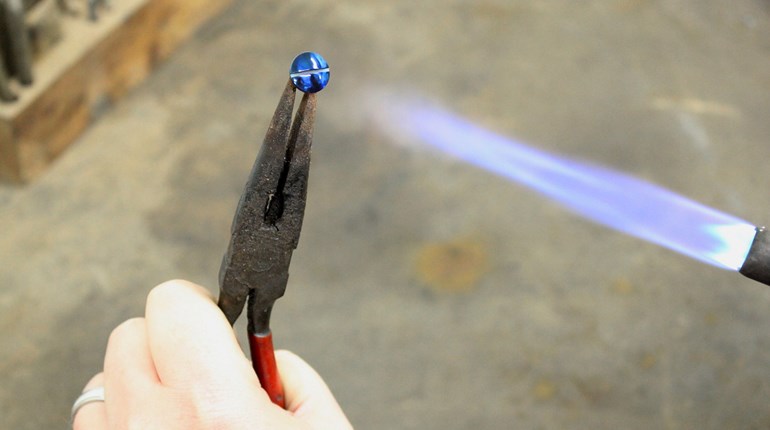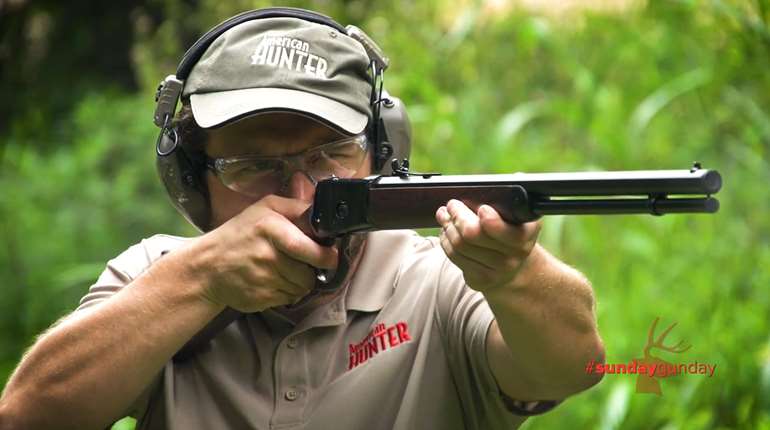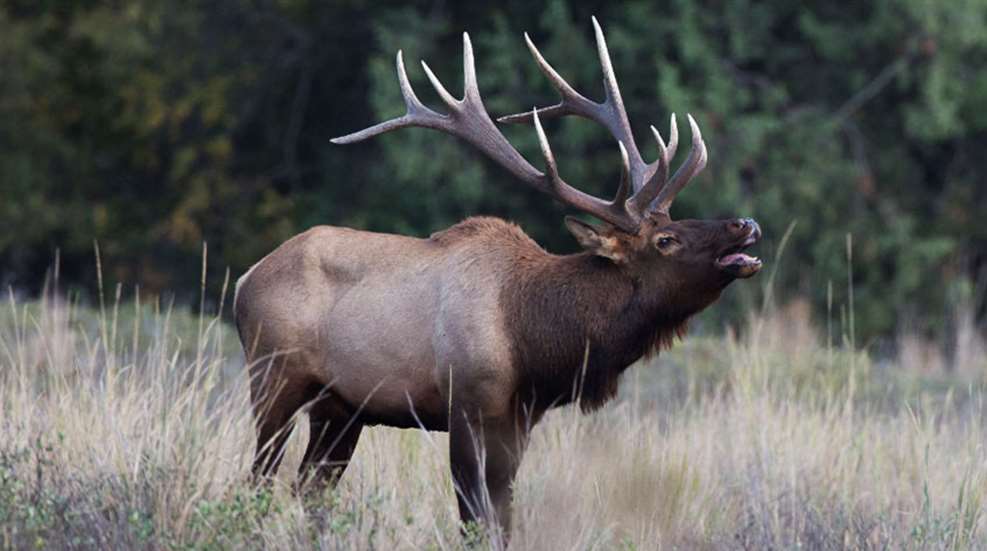
Of all the big-game animals we hunt in North America, elk have the most well-defined habits requiring widely different hunting strategies. The rut period is typically dramatic, with high-pitched screams emanating from the elk woods as bulls compete for cows, gathering as many as they can in their harems. Additionally, the cow call is uttered year-round by cows and calves. These sounds give elk the champion award when it comes to vocalizing, and also give hunters a wide array of vocalizing opportunities.
After the breeding season is over, bulls retreat to the timber, licking their wounds from the battles they fought. Then, as the weeks progress, elk are forced out of the high elevations by deep snow, migrating to lower winter ranges. That is the behavior of elk from early fall to winter in a nutshell. Based on this, it’s immediately obvious that different strategies must be used, depending on the situation.
The most successful elk hunters are those who are intimately familiar with the quarry’s habits. There are two ways you can hunt elk: on a DIY hunt or with a guide. Obviously, the guide will make the decisions based on his experience. Your only requirement is to follow him and ultimately shoot an elk. But if you’re without a guide, you need to have the savvy to put yourself within shooting range of the quarry. This is where knowledge of the country and elk behavior become key factors.
The first, and very important aspect of any elk hunt is the planning stage. After deciding on your hunting party members, you then select a state. From there, you must decide what unit to hunt, what options are available for preference points or bonus points if you’ve been accumulating them, and all the other details required to get a non-resident elk tag; many states don’t offer them over-the-counter, but instead require you to draw one in a lottery.
Let’s say you’ve planned your hunt, have an elk tag in your pocket and are ready to travel West with your buddies. Once you’ve reached your destination, you head for the elk woods. At that point, your success (obviously) depends on your ability to find and shoot an elk. Your odds aren’t good—the success rate among elk hunters is less than 30 percent nationwide, but don’t let that discourage you. Here are eight tips that will boost your chance of success on your next DIY elk hunt.
1. One of the biggest mistakes made by hunters during the rut is calling from a place that’s popular with other hunters, such as from a road, two track or well-used trail. Though you think you’re calling into a prime chunk of timber and that no one else is around, chances are good that bulls are used to hearing vocalizations from those accessible spots; it’s more than likely that other hunters have already called from those convenient areas. Instead, leave the road or trail and head into the timber.
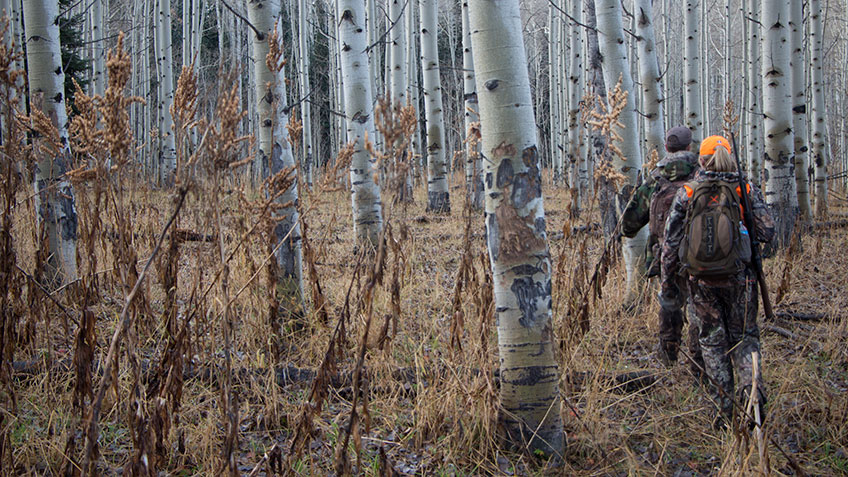
Go downhill every time you can; most hunters aren’t willing to transport an elk up a steep slope to a vehicle, as hiking uphill after a tedious day of hunting can be more of a challenge than most hunters want. Don’t call frequently when you’re deep in the forest. Instead, look for fresh sign; numerous rubbed saplings will tell you that you’re in a place that a bull likes and is possibly hanging out in the area. Often, a bull won’t respond unless you’re literally calling in his backyard.
2. When actively calling during the rut, select your calling area carefully. Hunker down in a spot where you’re free to move your firearm or bow when a bull approaches. Branches, saplings and trees close to you may require you to twist and turn, making unnecessary extra movements. If you hear a bull bugle, find a spot where he’ll likely make his approach and be within range when you see him.
Before calling, consider the scenarios. He might rush toward you and suddenly hang up unseen and refuse to come any closer, or he might not approach at all, especially if he’s a herd bull with cows; that’s when you need to change your tactics. You might want to back off without being seen, and retreat. Make a circle with the wind in your favor and call from a completely different direction, again using a cow call. Whether they’re herd bulls or solitary, they often can’t resist a new cow in their area. If you’re hunting with a companion, designate one as the shooter, the other the caller, and position the caller well behind the shooter. A timid bull might venture toward the caller, unaware of the shooter in the forward position.
3. Whenever traveling through the woods, blow the cow call softly, especially if you’re making noise in the underbrush. Bedded elk will hear you, but the sound of the cow call would allay their concerns, allowing you to get closer. It’s often impossible to travel silently in the woods. Always remember that cows and calves vocalize year round, often described as being similar to a bird’s chirp or a cat’s meow.
4. After the rut, bulls will no longer be vocalizing, or if so, very infrequently, and that’s on the rare occasion that a cow wasn’t bred during her estrus cycle and has come back into heat afterward. Bulls will often bed in dense blowdowns and thickets where an inexperienced hunter would doubt an elk can negotiate the thick cover. I’ve often been amazed at the places where I’ve jumped bulls. Since you’ll be making so much noise in these extremely dense areas, chances are good that elk will hear you and burst out of the beds before you can see them or get a shot. This is a perfect opportunity to put on a small drive with companions. If there are just two of you, have one person circle far ahead and take up a stand in order to intercept spooked animals. Obviously, safety is of paramount importance. Even if the law doesn’t require it, all the hunters should wear plenty blaze orange garments.
5. Many DIY hunters pursue elk on public land where there’s plenty of competition with other hunters. This is especially true in “general” hunt units where there are no hunter quotas and good access. Some of these places are jokingly referred to as a “pumpkin patches” because of the abundance of blaze orange everywhere. Unless you’re uncomfortable with all the people sharing the woods with you, you can make an all-day hunt by first scouting the area and determining places heavily used by elk, even though there are hunters in and around the area. Go to that spot before the sun comes up and gradually make your way to the place you’ve selected.
Sit next to a well-used trail with your lunch and plan to spend the day. Pick a spot that’s somewhat elevated so you have a better vantage point, such as a ledge, rock outcrop, or better yet, a saddle on a ridgetop. Elk prefer crossing mountain tops by running across a saddle, which is simply a dip or low spot on a ridge. Hunters will be moving through the woods around you, meaning elk in the area will also be moving. By sitting still, you can hear activity in the forest and get a shot at elk that become visible. If you become impatient or bored, resist the urge to go back to camp. Sit there all day; take a nap (if you must) or read a book. Once, while sitting next to a trail in woods full of hunters, a bull elk almost ran over me; I shot him at just 5 yards away. Another time, I saw one sneaking through the woods away from hunters and took him at 20 yards.
6. Elk are technically described as grazers, meaning they prefer grass as forage. This feeding behavior is opposite of deer, which are considered browsers, preferring shrubbery. Because grass grows best in the open, unshaded by the forest trees, elk feed in those spots, which are called parks, clearings or meadows. In places where there’s heavy hunter activity, elk become nocturnal. They typically leave their bedding areas in the timber just before dark, feed all night, and head back into the timber very early in the morning—sometimes when it’s still dark, or just as it begins getting light.
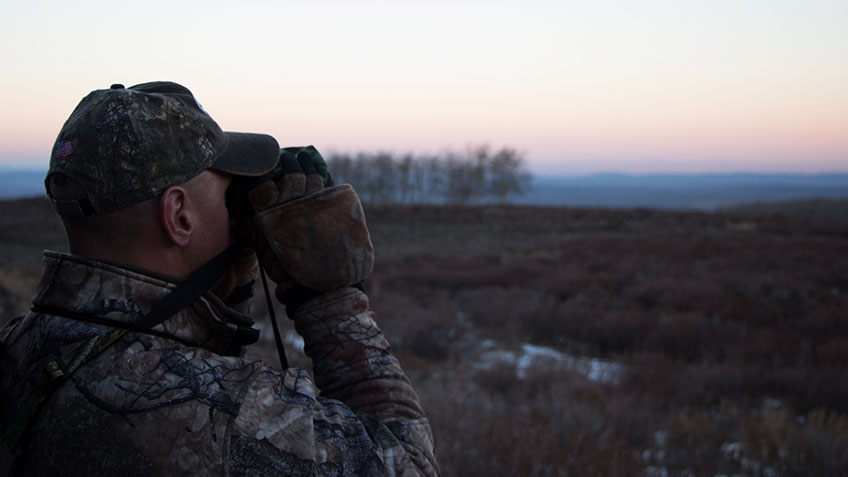
Savvy hunters will climb to the highest ridges they can in the morning’s darkness by using a small flashlight sparingly, arriving at their vantage point while it’s still dark. By being able to look down into meadows as soon as it’s light enough to see, feeding elk or animals slowly heading into the timber can be located. With that knowledge in mind, leave the area and hunt somewhere else. In the afternoon, well before dark, go to that meadow and find a hiding spot near the place where the elk entered the timber. Be sure the wind is in your favor and don’t hunker in too close; 150 to 200 yards is adequate. Chances are good the elk will return to the meadow close to the same way they left it. Plan to stay until the very last minute of daylight. Be sure you have a plan to field dress an elk in the dark and safely find your way out of the woods. Many times elk will show up literally within seconds before the end of legal shooting time.
7. As the season winds to a close, elk must make an exodus from the high country where deep snow covers their forage. They head for winter range, often traveling 50 miles or more. This is a tough time to hunt, since you’re apt to be dealing with extreme cold, plenty of snow and often bone-chilling winds. On a positive note, a huge part of their home range is now effectively devoid of elk; they’re more concentrated in lower elevations where access is far better than the backcountry.
Elk have always been tolerant of extreme cold. They came to North America from Siberia during the Ice Age some 10,000 years ago by crossing the then land bridge across the Aleutian Islands. That being the case, the availability of food is the driving force that motivates their migration, not the cold or snow, but herds will typically stop wherever there’s adequate forage. In the mountain country, that’s often wind-swept ridges where snow is blown off by strong winds, leaving plenty of nutritional grasses.
Savvy hunters will search the slopes for these feeding areas, not only looking for elk, but the presence of fresh tracks in the snow. On a sunny day, it’s possible to see fresh elk tracks from a mile or more away. What you’ll see is a large area of tracks made by dozens, sometimes hundreds of elk. Once they settle in on an area, they may remain there for a week or more. Hunters willing to expend some serious energy will ease up to these areas with the wind in their favor. Very often, the herd will be bedded fairly close to the wind-swept ridges.
8. Regardless of the season you hunt, always carry a cow call in your pocket where it’s handy. If it can be attached to a string, hang it around your neck. This call can be used in many ways. Here are some scenarios. You’re walking in country that’s fairly thick, and there’s fresh sign around you; blow the call softly and stop. Elk that are bedded nearby may hear the call and stand to look in your direction, believing you to be an elk.
Here’s another: You’ve spooked a herd of elk and they run off. You notice they split up into two or more groups, and the wind is in your favor. Stop moving and wait about 15 minutes. If possible, get up on a stump, log or rock where you have an elevated vantage point and blow the cow call. Elk typically want to regroup in their original herd; they may slowly head in your direction, thinking you’re part of the original group.
Finally, here’s the most important scenario. You’ve spooked a bunch of elk, or you see a herd running from someone else. Blow your cow call as hard as you can. Most of the time the elk will stop for a moment to look at you, giving you the opportunity to look them over and take your shot. This is similar to stopping a whitetail buck walking under your treestand. You grunt at him, and he suddenly stops to look up; it works the same way with elk. Even elk running full out are apt to stop. Be ready for a shot as soon as you blow the call.













